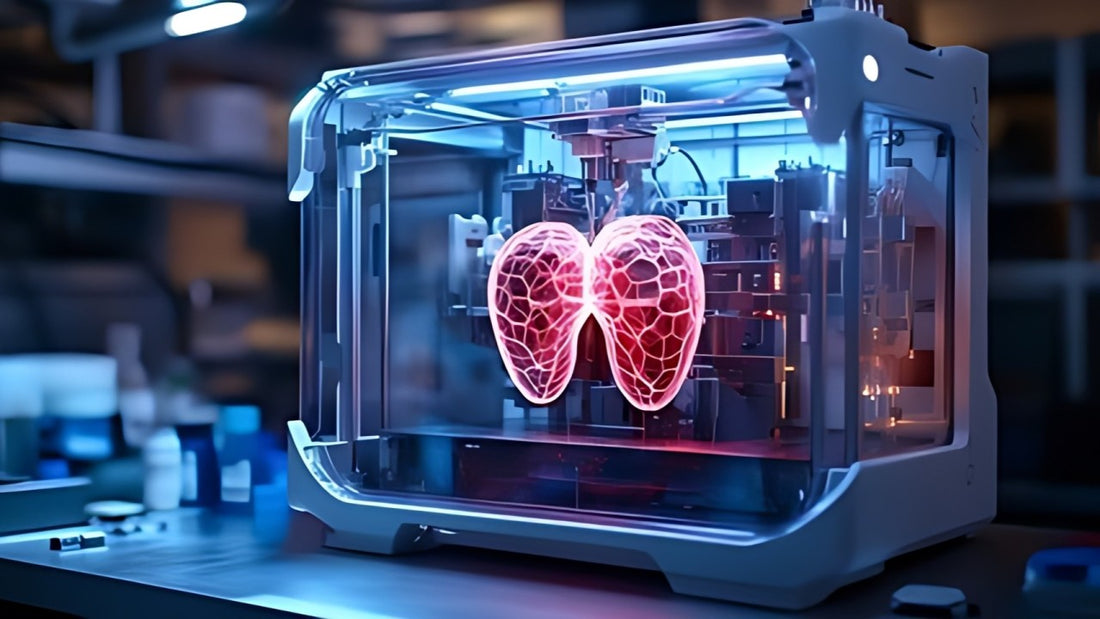
Bioprinting: The Next Frontier in Organ and Tissue Regeneration
Share
Bioprinting is an emerging technology that has the potential to revolutionize the field of regenerative medicine. By utilizing advanced 3D printing techniques, bioprinting is enabling the creation of functional tissue and organs with precise control over cell placement. This groundbreaking technology promises to address some of the most pressing challenges in healthcare, including organ shortages, tissue regeneration, and personalized treatments. In this article, we explore the concept of bioprinting, its current applications, challenges, and its future potential in the realm of organ and tissue regeneration.
What is Bioprinting?
Bioprinting is the process of creating three-dimensional (3D) structures using living cells and biomaterials, such as hydrogels, to build tissue-like structures. The technology uses a variety of printing techniques to layer these materials in precise patterns to form complex biological structures. These printed tissues can mimic the function of natural tissue and can eventually be used to regenerate damaged or diseased organs.
How Bioprinting Works
The process of bioprinting involves several key components:
- Bioinks: These are specialized inks made from living cells and other biomaterials. Bioinks serve as the "printing material" and are crucial in supporting cell growth and differentiation.
- 3D Printing Technologies: Similar to traditional 3D printing, bioprinting uses technologies like inkjet, extrusion, and laser-assisted printing to deposit bioinks layer by layer to build the structure of the tissue or organ.
- Scaffolding: Scaffolds provide structural support for the growing tissue and help guide the cells as they form into functional tissues.
Applications of Bioprinting
Bioprinting is being explored in several areas of medicine, including tissue engineering, organ transplantation, and drug testing. Here are some notable applications:
1. Tissue Regeneration
One of the most promising applications of bioprinting is in the regeneration of damaged tissues. Bioprinted tissues can be used to replace or repair damaged organs or tissues, such as skin, cartilage, and bone. For example, researchers have successfully bioprinted skin grafts for burn victims and cartilage for patients with joint damage. The precision of bioprinting allows for the creation of tissues that closely resemble the body's natural structure, improving the likelihood of successful integration.
2. Organ Transplantation
Perhaps the most exciting potential of bioprinting is its ability to create fully functional organs. With organ transplant waiting lists growing longer and organ shortages becoming a global crisis, bioprinting offers the possibility of printing organs on demand. In 2021, researchers printed the first vascularized human kidney, a significant milestone in the journey toward creating viable organs for transplantation. While we are still far from being able to bioprint fully functional organs for human implantation, these advancements represent a promising step forward.
3. Drug Testing and Development
Bioprinting allows for the creation of 3D cell cultures that replicate the architecture of human organs. These bioengineered tissues can be used in drug development to test the efficacy and safety of new medications without the need for animal testing. The ability to simulate human tissue responses in a lab setting is paving the way for more accurate and ethical drug development.
Challenges in Bioprinting
While bioprinting holds immense potential, several challenges must be overcome before it can become a widespread solution in healthcare:
- Complexity of Organs: Bioprinting complex organs with multiple types of cells, blood vessels, and functional tissue layers is an extremely difficult task. Creating organs like the heart or liver requires sophisticated designs and materials that can mimic the organ's multi-functional capabilities.
- Vascularization: One of the key challenges in bioprinting is ensuring that bioprinted tissues have a functional blood supply. Without a proper vascular network, cells within the tissue cannot receive the nutrients and oxygen they need to survive and function effectively.
- Regulatory Approval: As bioprinted tissues and organs move closer to clinical use, regulatory bodies such as the FDA will need to establish safety standards and approval processes for these technologies. This will require rigorous testing and validation to ensure that bioprinted organs are safe for human use.
The Future of Bioprinting
The future of bioprinting is incredibly promising. As research continues and technology advances, the ability to bioprint fully functional tissues and organs is becoming more attainable. In the coming years, we can expect to see significant breakthroughs in the bioprinting of complex tissues, enhanced vascularization techniques, and even the printing of human organs for transplantation. Additionally, bioprinting may revolutionize personalized medicine, allowing for treatments and implants tailored specifically to an individual's unique genetic makeup.
Conclusion
Bioprinting represents a paradigm shift in the world of regenerative medicine. By combining cutting-edge technology with biological materials, bioprinting is paving the way for new solutions to some of healthcare’s most significant challenges. While there are still hurdles to overcome, the potential for bioprinting to revolutionize organ and tissue regeneration is immense. As technology continues to evolve, bioprinting may one day provide life-saving treatments for those in need of organ transplants or tissue repairs, changing the future of medicine as we know it.
